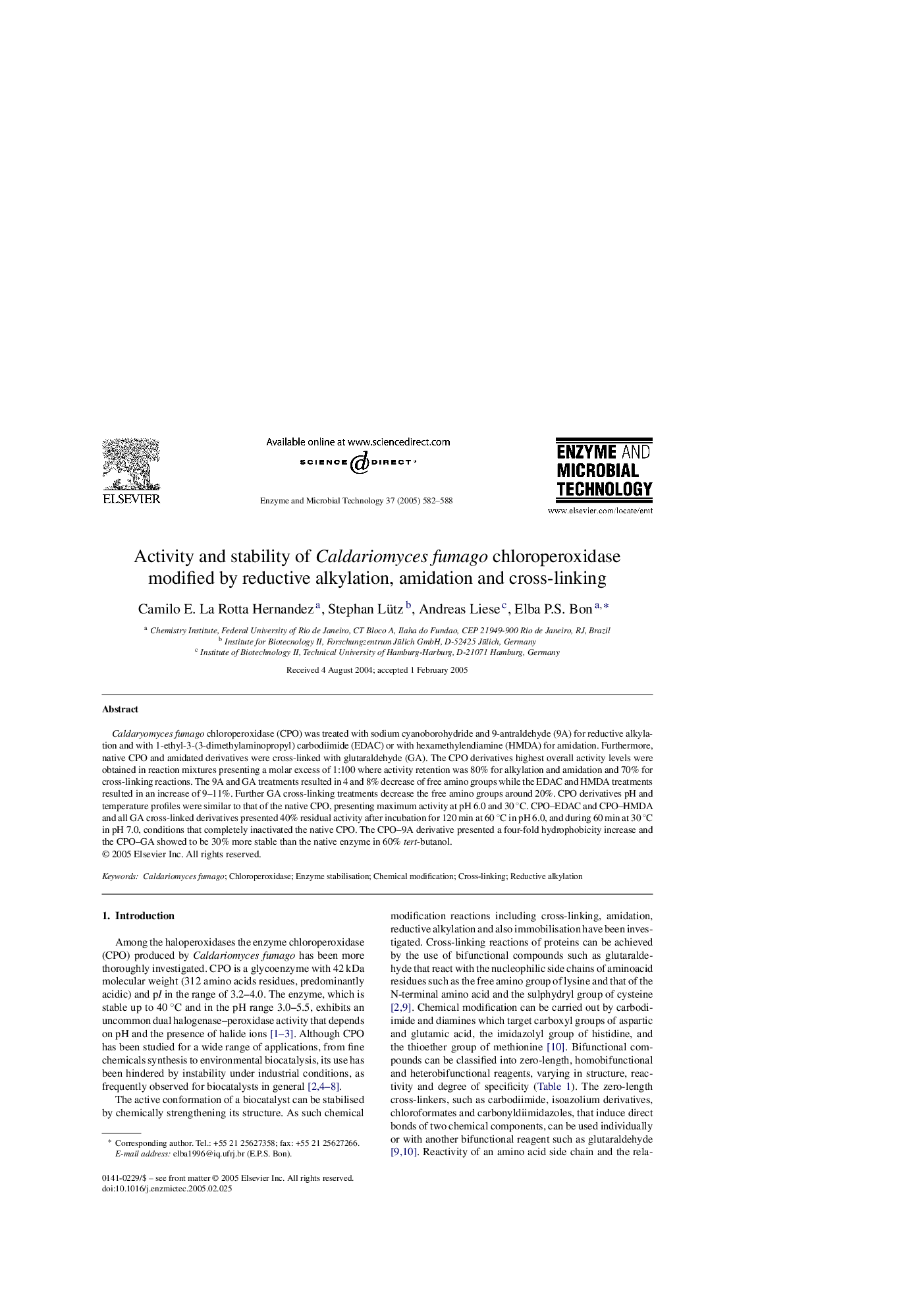| Article ID | Journal | Published Year | Pages | File Type |
|---|---|---|---|---|
| 10233159 | Enzyme and Microbial Technology | 2005 | 7 Pages |
Abstract
Caldaryomyces fumago chloroperoxidase (CPO) was treated with sodium cyanoborohydride and 9-antraldehyde (9A) for reductive alkylation and with 1-ethyl-3-(3-dimethylaminopropyl) carbodiimide (EDAC) or with hexamethylendiamine (HMDA) for amidation. Furthermore, native CPO and amidated derivatives were cross-linked with glutaraldehyde (GA). The CPO derivatives highest overall activity levels were obtained in reaction mixtures presenting a molar excess of 1:100 where activity retention was 80% for alkylation and amidation and 70% for cross-linking reactions. The 9A and GA treatments resulted in 4 and 8% decrease of free amino groups while the EDAC and HMDA treatments resulted in an increase of 9-11%. Further GA cross-linking treatments decrease the free amino groups around 20%. CPO derivatives pH and temperature profiles were similar to that of the native CPO, presenting maximum activity at pH 6.0 and 30 °C. CPO-EDAC and CPO-HMDA and all GA cross-linked derivatives presented 40% residual activity after incubation for 120 min at 60 °C in pH 6.0, and during 60 min at 30 °C in pH 7.0, conditions that completely inactivated the native CPO. The CPO-9A derivative presented a four-fold hydrophobicity increase and the CPO-GA showed to be 30% more stable than the native enzyme in 60% tert-butanol.
Related Topics
Physical Sciences and Engineering
Chemical Engineering
Bioengineering
Authors
Camilo E. La Rotta Hernandez, Stephan Lütz, Andreas Liese, Elba P.S. Bon,
